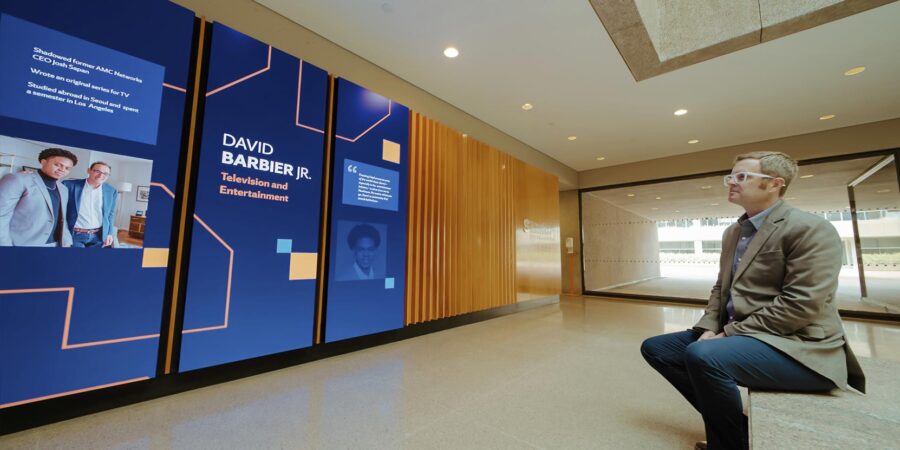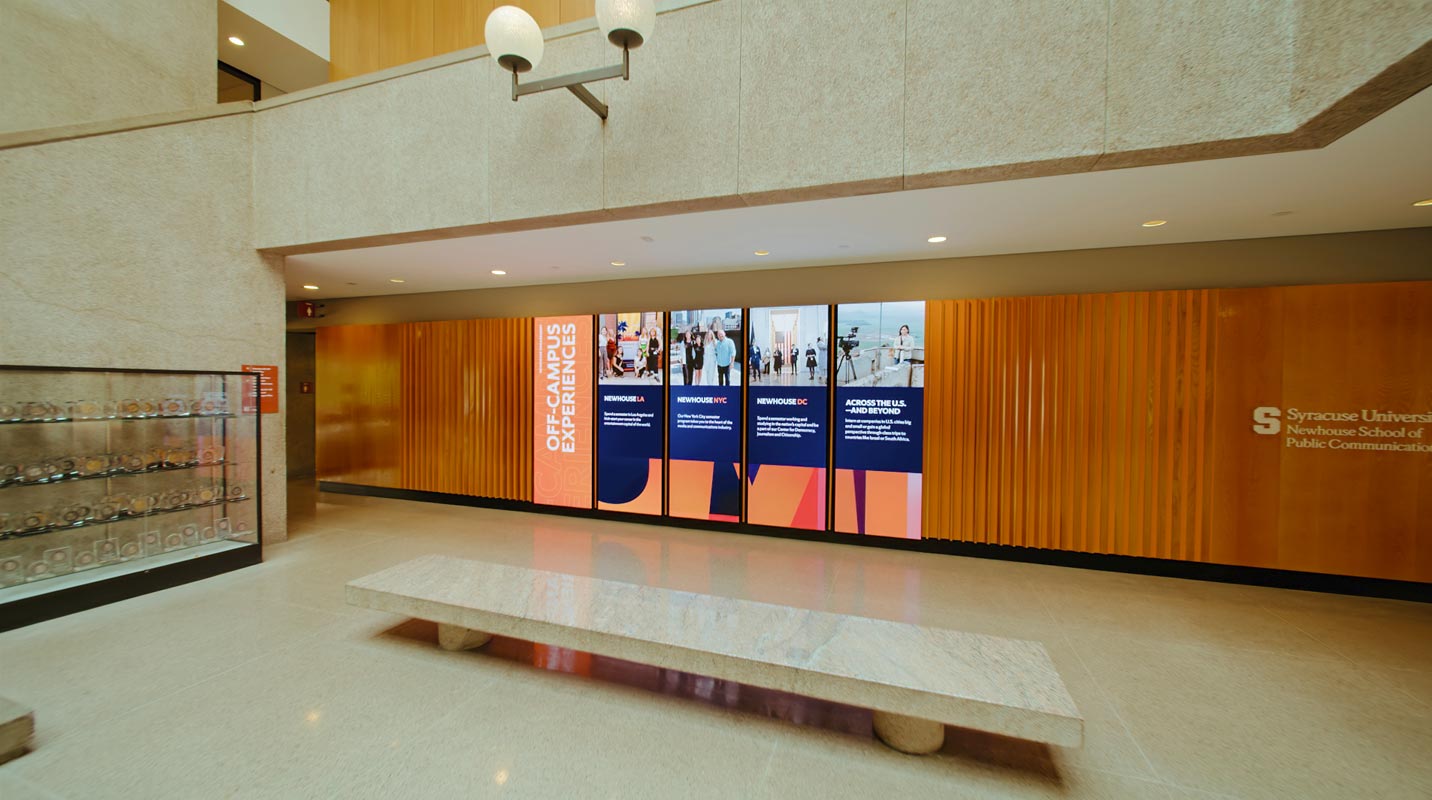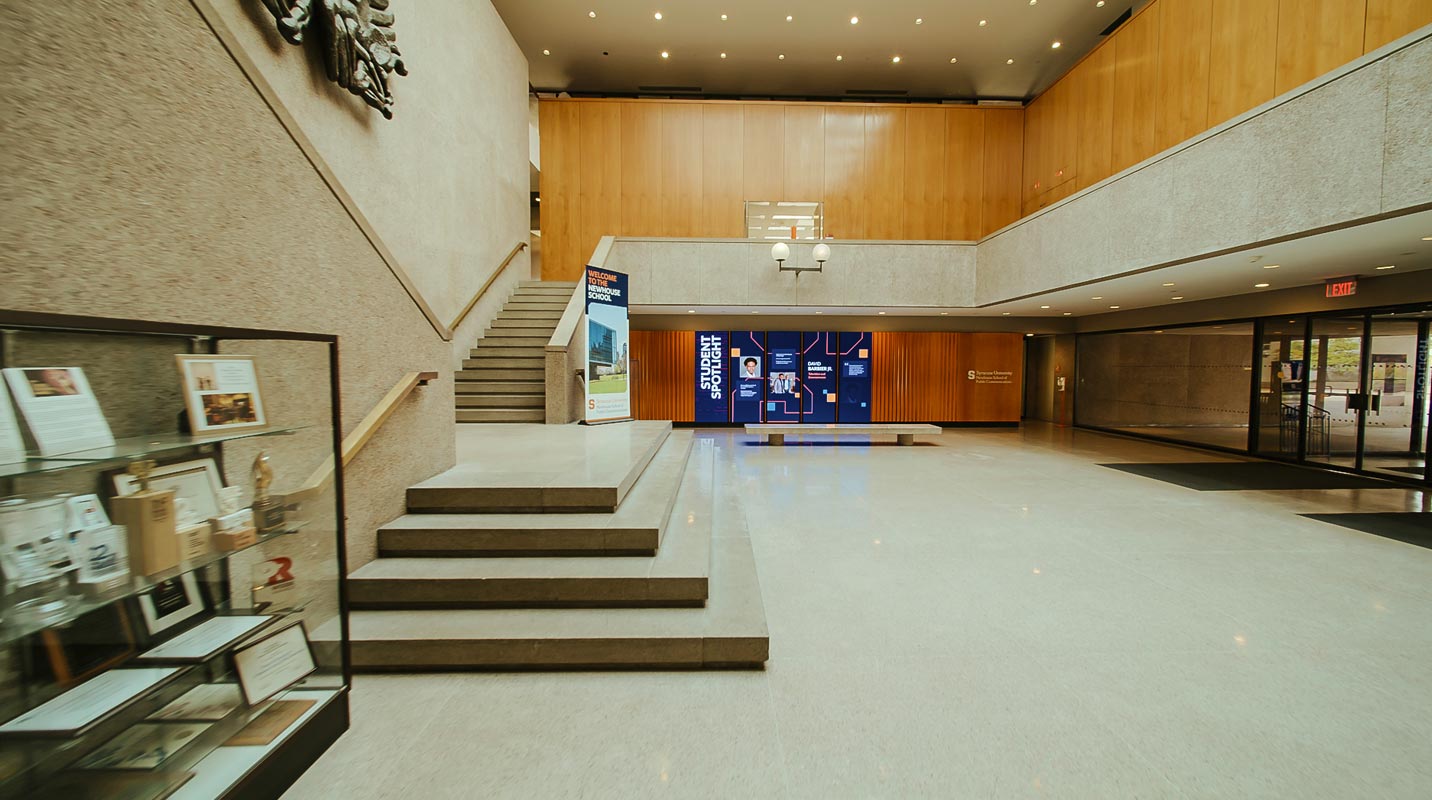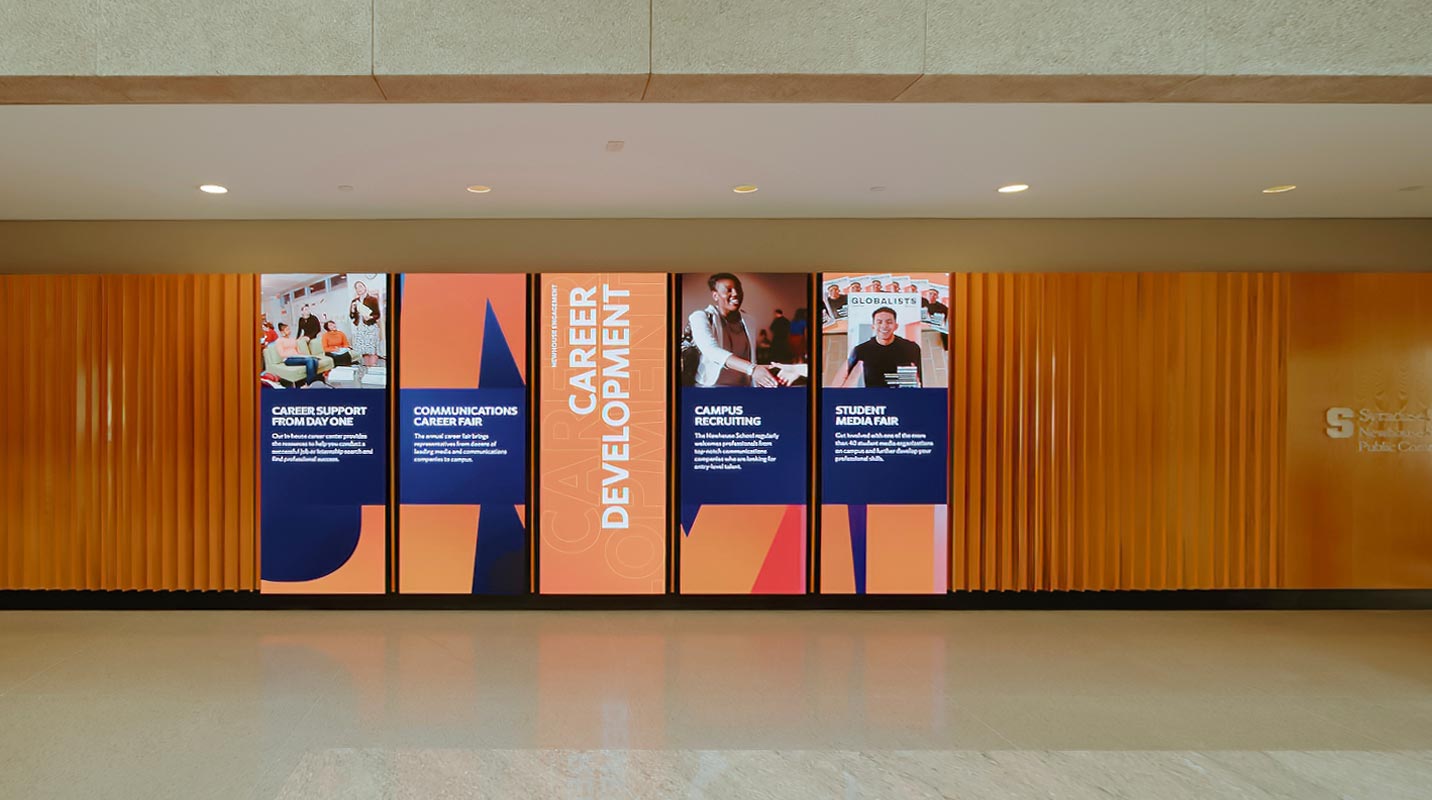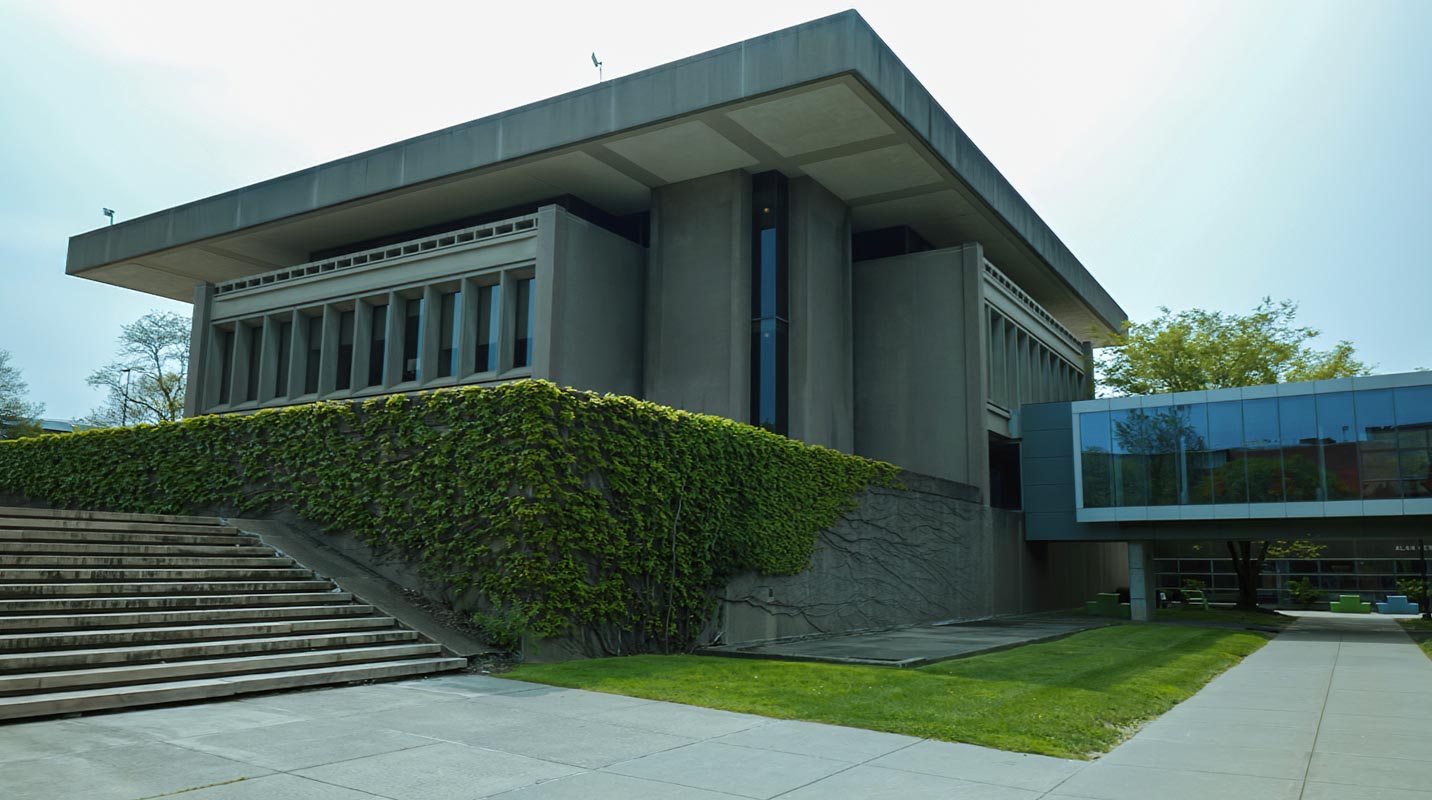
The Challenge
The S.I. Newhouse School of Public Communications at Syracuse University prepares today’s students to enter a wide number of professions, including advertising, journalism, graphic design, public relations, sports broadcasting and film. The lobby in Newhouse 1 — one of three buildings within the school and part of the larger 721-acre campus — is where prospective communications students gather when they visit for a tour. Opened in 1964, Newhouse 1 was designed by world-renowned architect I.M. Pei. Recently, school leaders sought to add a modern touch to complement Pei’s original blueprint. The plan was to add a digital element to a main wall that didn’t encroach on pedestrian traffic throughout the building.
The Solution
The Newhouse School, working with global architecture, design and planning firm Gensler, tapped Samsung for the purchase and installation of a dynamic visual element featuring The Wall. The digital presentation captures the attention of prospective students and parents as soon as they walk into the building, conveying the enthusiasm and energy of current students, faculty and staff at the school. It conveys both a presence of life in the building and a showcase of the personality and wide variety of successes a Newhouse education can bring.
“It really makes Newhouse 1, which was once a very dark vestibule at night, just come alive.”
-Brian Tibbens, director of information technology at the Newhouse School
The Results
The Newhouse School now has a five-panel, cohesive display that is used to inform and entertain prospective students and their families. The Wall has become part of the official school tour and provides a “wow factor” for everyone who comes into the building. The cutting-edge microLED video wall provides a canvas for storytelling and communication for years to come.

About the Newhouse School
The S.I. Newhouse School of Public Communications at Syracuse University trains the next generation of communications leaders, preparing students to not only enter a rapidly changing media industry, but to shape its future. Called one of the “very best schools” in its field by the Accrediting Council on Education in Journalism and Mass Communications (ACEJMC) in an April 2023 reaccreditation report, Newhouse has been lauded for providing an excellent educational experience due to its outstanding students, faculty, staff, leadership and facilities, as well as financial stability and a deep curriculum. The school’s 250,000-square-foot, three-building complex is a leading-edge learning environment where students are exposed to top-notch tools and technologies used by professionals in the field.
The Challenge
Getting prospective students to see the possibilities
The Newhouse School trains the next generation of leaders in communications, preparing students to enter the rapidly changing media industry and shape its future. Rooted in teaching the fundamentals, Newhouse is also committed to training students to develop expertise in technology-driven tools and practices that can help them shape the future of their respective fields.
Newhouse 1 is the administrative base of the school, with the building housing Dean Mark J. Lodato’s suite, as well as some classrooms and faculty offices. The building’s beautiful and iconic architecture designed by world-renowned architect I.M. Pei was constructed between 1962 and 1964. The cruciform-shaped structure features soaring windows and a 32-foot-high ceiling with a skylight, a unique look and feel that made updating the space while staying true to the traditional design an interesting challenge. To ensure it could also inform and educate through digital capabilities, it was time to incorporate an eye-catching video wall.
“First impressions are very important, so we wanted to make sure there was some kind of story prospective students and their families could watch or read when they’re waiting for their information session to start,” explains Susan Nash, Newhouse’s director of administration.
Nash, who also serves as Lodato’s chief of staff, says the dean was eager to provide a “wow factor” for visitors when first they walked through the door, not just a TV monitor or typical digital signage display.
There were other considerations as well. From a design standpoint, whatever went up had to be slim and streamlined. The area sees a lot of foot traffic, so anything placed in the area had to sit flush with the wall, says Brian Tibbens, director of information technology at the school.
Longevity, ease of use and high-definition capabilities were all at the top of the must-have list.
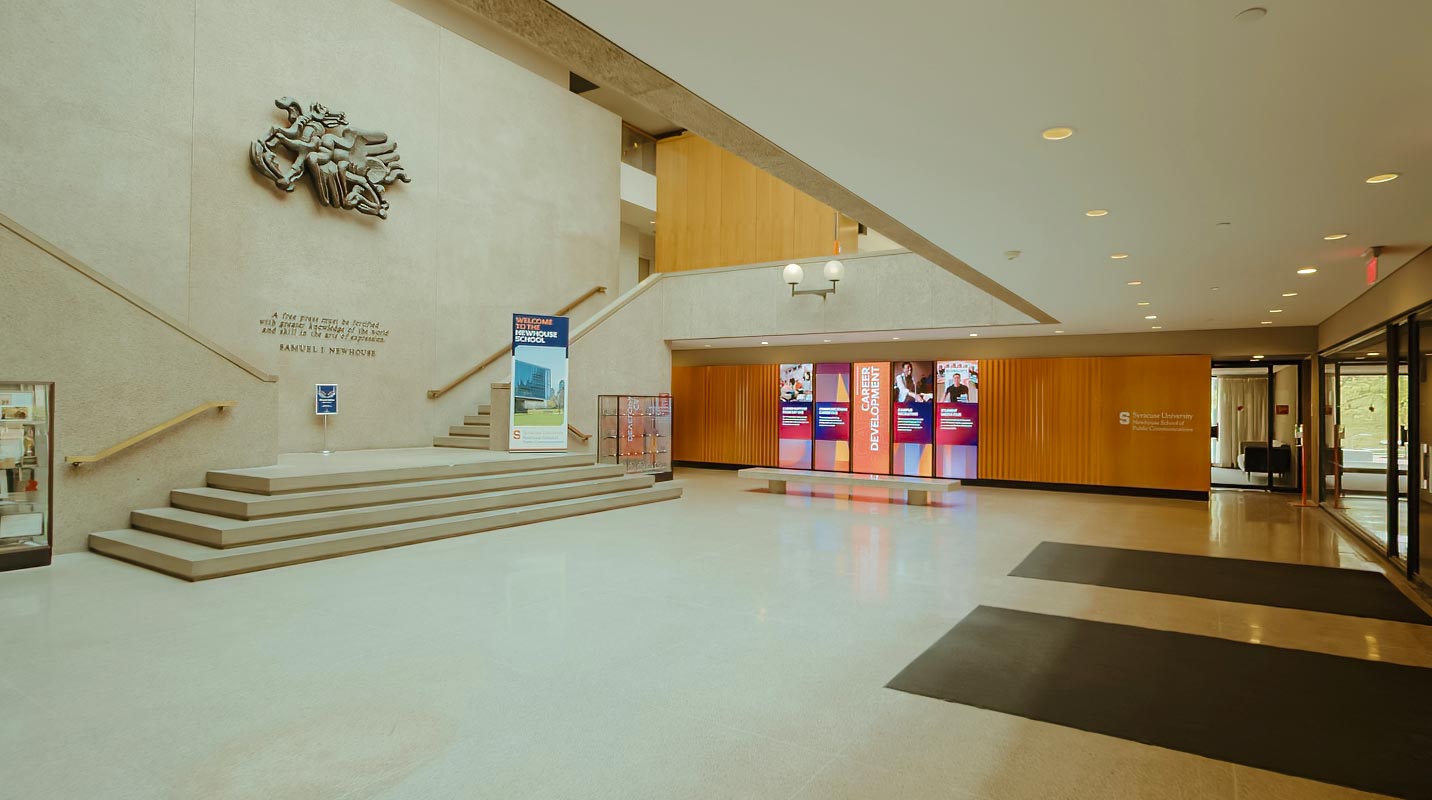
The Solution
Samsung's The Wall brings the building to life
After spending weeks looking at various vendors, the Newhouse School decided on The Wall from Samsung. The resulting video wall utilizes five of Samsung’s MicroLED technology displays and features five pillars to complement Pei’s design of the vertical pillars, found both outside and inside the building.
One of the major factors that set The Wall apart from other video displays was its ability to work as individual panels as well as a single, cohesive display, all while taking up little space. Nash describes the installation as streamlined and slim, alluding to the easy clip installation system that lets the five panels sit nearly flush with the wall.
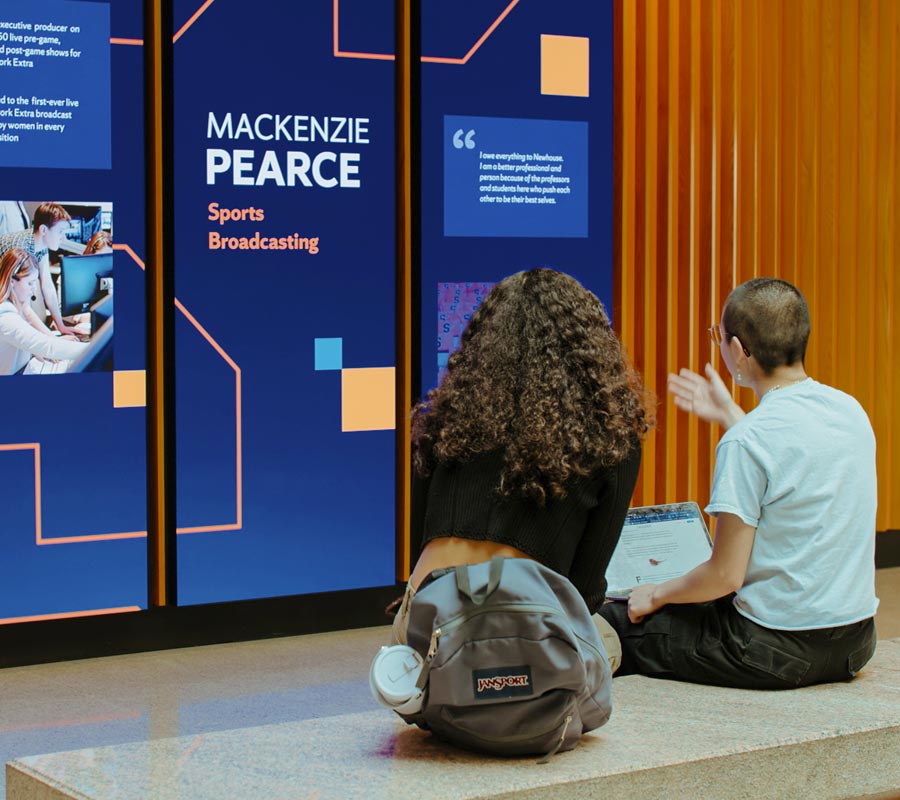
“We could not afford for them to build out extra space on this wall — to bump it out into the space — because of all the traffic that goes through that main lobby and being mindful of ADA requirements,” Nash says.
The picture quality is superior to other vendors’ offerings in the space, Tibbens explains. While Tibbens and the IT team surveyed other technologies, The Wall’s display delivered the sharpest display. This is in large part due to The Wall having micrometer-scale LEDs that form LED modules, resulting in what resembles wall tiles comprised of mass-transferred clusters of nearly microscopic lights.
“We looked at a couple different vendors. One of them was traditionally used in large arena environments, but the pixel ratio was so off,” he says. “It looked good if you’re 50 feet away, but once you get up close, it just looked abysmal. We needed something that was very clean, very low profile, and pretty much bezel-less so it would link into the design aesthetic of the Gensler team that envisioned this really amazing wooden slat design.”
Samsung’s The Wall offers all those key factors and more, Tibbens says. Take its longevity, for instance. The school has other video walls in different buildings, but none of them could match the quality or warranty of The Wall.
“We moved from what I would consider a consumer-grade to a commercial-grade by going [with] The Wall — and that was the big thing,” he says. “We’re looking at something that’s going to be in play for eight to 10 years. And The Wall was one of the few products that have that longevity cycle for basically something that doesn’t turn off outside of the occasional power outage.”
The Technology
The Wall
The Wall makes a bold, breathtaking statement like no other. The possibilities are endless. A deep black background blankets the screen with perfect uniformity, creating a seamless canvas for purer black levels with enhanced depth.
The Results
A beacon of light — and information
Today, the Newhouse School has a video wall that constantly cycles through Syracuse University branding and a presentation that includes student highlights and stories that give visitors a chance to envision what it might be like to study at one of the nation’s premier communications schools, Nash says.
“When they are coming to visit, they want to see what other students have done,” Nash explains. “We have five student highlights that we cycle through showing pictures of them and their class and something special they did while they were here.” The final part of the presentation focuses on experiences that all Syracuse University students have access to, such as on-campus programs and alumni networks.
The Wall has changed the entire personality and atmosphere of the Newhouse 1 building, says Nash. During the day it brightly welcomes students and visitors, and at night it provides a warm, welcoming light that shines out of the building’s many windows and skylight.
Nighttime is the “best time to see the building when [The Wall] is on because it just illuminates the entire lobby,” Tibbens adds. “It really makes Newhouse 1, which was once a very dark vestibule at night, just come alive.”
Tibbens says the professionalism and experience of working with Samsung were far and above any other vendor experience he’s ever had. “They were very efficient. They put in the time to get it done the way it was supposed to be done. From my end, I thought that was probably the top-line response [I’ve had] after working with multiple vendors over the years.”
Going forward, the Newhouse School expects to evolve its project with Samsung’s The Wall, changing its content and thinking of new ways to use it thanks to its flexibility and advanced capabilities.
“We do have an open ticket with our design team,” Tibbens says. “Because we know this isn’t a static product — this is something that’s a living environment. It’s going to have to change because our needs are going to change. Every couple of years we can add new content [and] change out what we have for something completely new or innovative. As the markets emerge and diversify, we can diversify with it.”
